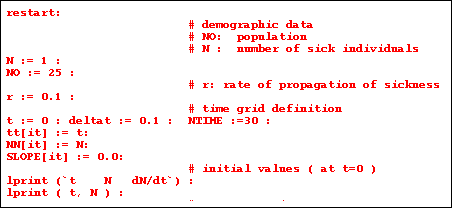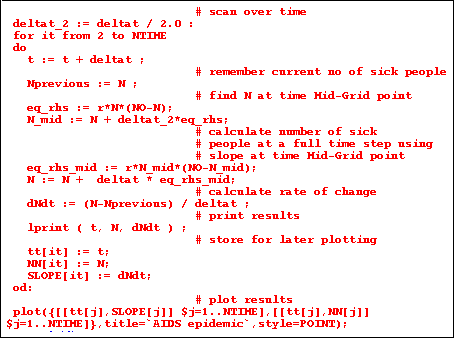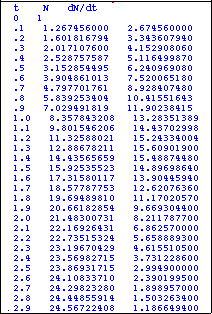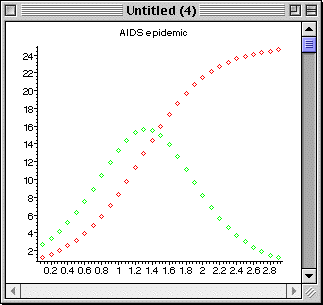



AIDS is infecting many sectors of the population in an epidemic proportion. As in every epidemics situation, simple mathematical models can describe the propagation of the sickness quite accurately.
Let N0 be the number of people in the sample population. Let N(t) be the number of sick people at time t. Getting the sickness happens at random, with a given probability. So the situation resembles that of the radioactive decay. At first sight one might assume that the same equation will work for an epidemics situation, namely
![]()
The plus (+) sign is due to the fact that N(t) increases with time. The constant r is a probability. But, this does not work! It predicts an ever increasing exponential solution for the number of sick people. This is nonsense since nobody can get sick if everybody is already sick!
What was forgotten is that it is only a healthy person who can become sick. So, lets assume

But this does not work either. A sample population will spontaneously get infected, which is not possible. There must be some infected individuals in a population to get the epidemics going.
In reality you must have both sick and healthy individuals who get in contact for a sickness to propagate. This seems to imply that a better model might be
![]()
The following Maple worksheet solves this equation. Note the saturation in the number of sick individual. Note also that the maximum in the number of individuals who get infected occurs when half the population is infected and half healthy. The solution is via the Mid-Point method.




The model may not be entirely realistic; for instance, people are known to die of AIDS, a fact not included in our model!
|
Any questions or suggestions should be directed to |